When you think of roofing shingles, you probably think of the traditional asphalt shingle, but, while asphalt shingles are popular for a reason, they’re not always the right choice.
There are a number of different types of roof shingles that can suit different home styles, different budgets, and different lifestyle goals.
Want to lower your electric bill and help save the environment? Check out solar shingles.
Need something cozy and rustic for your cottage home? Wood shakes may be right for you.
What about something sophisticated and long-lasting (100 years long-lasting)? Slate shingles are a good choice (provided you have the money to match your taste).
In this article, we’ll go over 8 types of roof shingles, including wood shingles, solar shingles, metal shingles, and even rubber shingles. We’ll discuss each shingle type’s unique characteristics, pros and cons, cost, and more.
Investing in the right shingle is almost as important as working with the right contractor, and in this article, we’ll help you make the right decision.
1. Asphalt Shingles
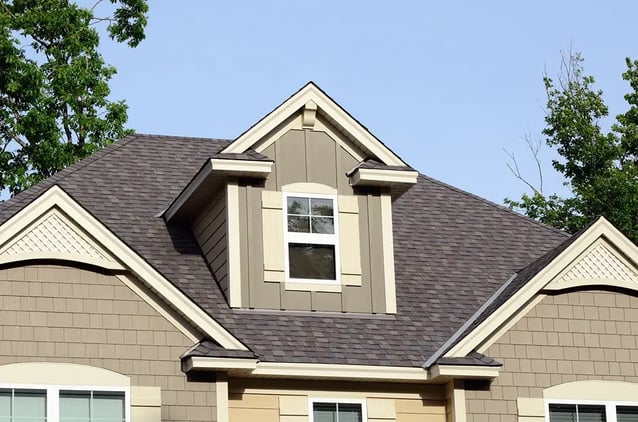
Asphalt shingles are the most common roofing material used in the United States, and for good reason. They’re budget-friendly, easy to install, and come in a huge variety of colors and styles.
One of the key advantages of asphalt shingles is their adaptability. You can find them in different styles and thicknesses to match your aesthetic preferences, your climate, and your desired lifespan. Whether you’re going for a classic, traditional look or something more modern, there’s an asphalt shingle option for you.
Types of Asphalt Shingles
Asphalt shingles come in three main types: 3-tab shingles, architectural shingles, and luxury shingles.
3-Tab Shingles
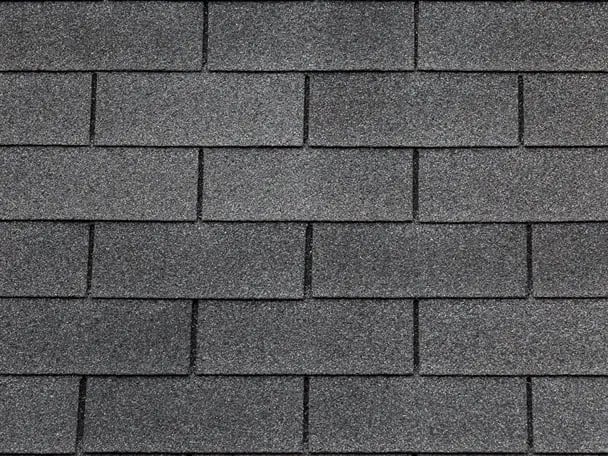
3-tab shingles are the most basic and economical type of asphalt shingle. They get their name from the cutouts or “tabs” along their lower edge, giving the appearance of three separate pieces when installed, though they are actually one single piece. If you're looking for a simple, lightweight, and affordable option, 3-tab shingles are a solid choice.
However, while they are budget-friendly, 3-tab shingles are generally thinner and less durable than other asphalt shingles, like architecturals. This means they have a shorter lifespan, typically around 10-15 years, and they may not hold up as well under extreme weather conditions like high winds or hail.
Architectural Shingles
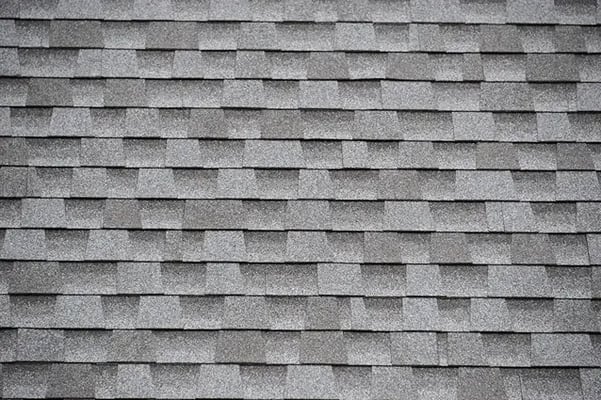
Architectural shingles, sometimes called dimensional or laminate shingles, are a step up in both appearance and performance. They are thicker than 3-tab shingles, with layers of material that create a more dimensional, textured look. Architectural shingles can even mimic the appearance of natural materials, helping you get the look of wood or slate without the high maintenance of the former or the high cost of the latter.
In addition to a nicer look, architectural shingles are more durable than 3-tab shingles due to their extra thickness, making them a better option for areas prone to strong winds or heavy storms. They also tend to last longer, with lifespans ranging from 25 to 30 years or more.
Luxury Shingles
Luxury shingles are the high-end option within the asphalt shingle category. They are designed to replicate the appearance of more expensive roofing materials like slate, but without the high cost or complex installation. Luxury shingles offer the most detailed designs and textures, giving your roof a rich, sophisticated look that stands out.
Not only do luxury shingles look great, they also deliver top-tier performance. They are the thickest and most durable type of asphalt shingle, capable of withstanding severe weather and lasting upwards of 30 to 50 years.
Pros of Asphalt Shingles
- Affordability: One of the biggest draws of asphalt shingles is their cost-effectiveness. They are one of the most affordable roofing materials available, making them accessible for most homeowners.
- Easy Installation: Asphalt shingles are relatively easy to install, which helps keep labor costs lower compared to more complex roofing materials.
- Versatile Design Options: With a wide range of colors, textures, and styles, you can find an asphalt shingle that matches your home’s aesthetic.
- Widely Available: Because they are so popular, asphalt shingles are easy to source from most roofing contractors and suppliers.
Cons of Asphalt Shingles
- Shorter Lifespan: Compared to materials like metal or slate, asphalt shingles have a shorter lifespan. While they can last anywhere from 20 to 30 years depending on the type, they will eventually need to be replaced sooner than other, more durable materials, like metal.
- Weather Resistance: While architectural and luxury shingles are very durable, asphalt shingles in general may not hold up as well as other materials in extreme weather conditions.
- Energy Efficiency: Although asphalt shingles provide some insulation, they don’t offer the same level of energy efficiency as other roofing materials like metal or tile.
2. Metal Shingles
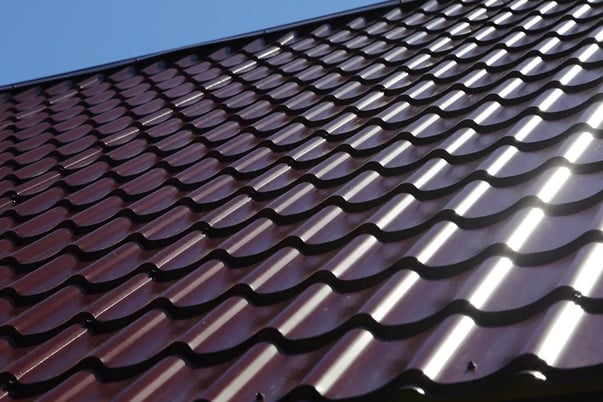
Metal shingles are an attempt to blend the strength and durability of metal with the traditional aesthetic of shingles. While not as popular as metal panel roofing (like standing seam metal roofing), they are becoming an increasingly popular choice for homeowners. They not only provide excellent protection against harsh weather conditions but also contribute to energy savings by reflecting sunlight and reducing heat absorption.
In addition to their energy efficiency, metal shingles are known for their long lifespan and minimal maintenance needs. Unlike traditional asphalt shingles, which need to be replaced every 20-30 years, metal shingles can last 50 years or more.
Types of Metal Used
The three main types of metal shingles are made from steel, aluminum, and copper.
Steel
Steel is one of the most commonly used metals for roofing shingles because of its strength and durability. Steel shingles are typically coated with a protective layer to prevent rust. A popular finish for steel shingles is a stone-coated surface, which not only enhances durability but also gives the shingles a textured, more traditional look that can resemble asphalt or even tile.
Steel shingles are particularly well-suited for areas that experience heavy snow or hail, as the material is strong enough to resist impact damage. They are also fire-resistant and can withstand strong winds, making them an excellent option for homes in storm-prone regions. However, steel shingles can be heavier than other metal options, so you’ll need to make sure your roof structure can support the weight.
Aluminum
Aluminum is a lightweight metal that is naturally resistant to rust, making it a common choice for coastal areas or regions with high humidity. Unlike steel, aluminum doesn't need to be coated to prevent corrosion. Aluminum shingles are also highly reflective, enhancing their ability to reduce heat absorption and improve your home's energy efficiency.
One of the advantages of aluminum shingles is that they’re very lightweight, which means they can be installed over existing roofing materials in some cases, eliminating the need for a full roof replacement. Aluminum shingles are also highly customizable, available in a variety of colors and styles, allowing you to match your roof to your home's design.
However, aluminum is a softer metal than steel, so it may be more prone to denting from hail or other impacts.
Copper
Copper shingles are a premium roofing material that with a unique, beautiful aesthetic and exceptional longevity. Copper shingles start with a shiny, metallic look and gradually develop a beautiful greenish-blue patina over time. This natural aging process makes copper shingles highly sought after for homeowners who value elegance.
In addition to their beauty, copper shingles are extremely durable and resistant to corrosion, making them an excellent long-term investment. In fact, copper shingles can last over 100 years with minimal maintenance.
Copper, however, is one of the most expensive roofing materials available, and its high cost is a deterrent for most.
Pros of Metal Shingles
- Durability: Metal shingles are incredibly durable, withstanding harsh weather conditions such as heavy winds, hail, snow, and even fire. They’re resistant to cracking, shrinking, and erosion, which are common problems for other roofing materials like asphalt or wood.
- Fire-Resistant: Metal is non-combustible, making metal shingles highly fire-resistant. This can provide extra peace of mind, particularly if you live in an area prone to wildfires.
- Energy Efficiency: Metal shingles reflect solar heat, which helps keep your home cooler during the summer months.
- Long Lifespan: With proper installation and minimal maintenance, metal shingles can last 50-100 years.
- Low Maintenance: Metal shingles are resistant to common roofing problems like moss, mildew, and insect infestations, requiring less maintenance than materials like wood or asphalt.
- Sustainability: Many metal shingles are made from recycled materials and are themselves fully recyclable at the end of their lifespan, making them an environmentally friendly roofing option.
Cons of Metal Shingles
- Higher Upfront Cost: One of the main drawbacks of metal shingles is their higher initial cost compared to more affordable options like asphalt. Although they offer long-term savings due to their durability and energy efficiency, the upfront investment may be too steep for some.
- Noise: While modern metal roofing systems often include noise-dampening layers, some homeowners may still notice increased noise during heavy rain or hail. This can be minimized with proper insulation, but it’s something to keep in mind if you’re sensitive to noise.
- Aesthetic Preference: Not everyone likes the look of metal shingles. Some prefer the traditional appearance of asphalt or wood shingles, and even with a range of colors and textures available, the metallic look may not suit every home style.
- Installation Expertise: Metal shingles require precise installation, and not all roofing contractors have experience working with metal materials. It’s important to choose a qualified contractor to ensure your metal shingles are installed correctly, which can add to the overall cost.
3. Slate Shingles
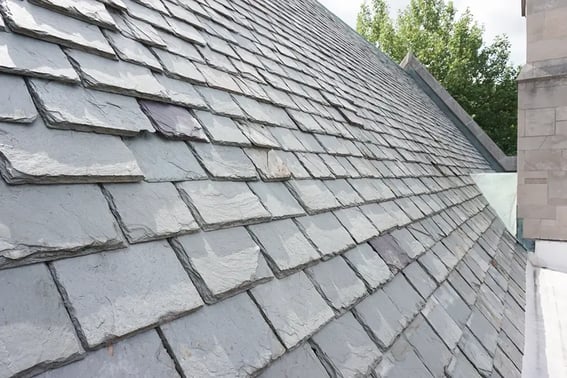
Slate, a natural stone that has been used for centuries on high-end homes and historic buildings, is prized for its sophisticated look. The natural, textured appearance of slate gives roofs a unique character that few synthetic materials can replicate.
When you choose slate shingles, you're not only investing in aesthetics, but also in a roof that can last a lifetime—and then some. Slate is one of the longest-lasting roofing materials on the market, with some roofs lasting well over 100 years with proper care.
However, slate does come with its challenges, such as weight and cost.
Pros of Slate Shingles
- Extremely Long-Lasting: One of the biggest benefits of slate shingles is their longevity. Slate is a natural stone that is incredibly durable, and with proper maintenance, a slate roof can last 100 years or more. In fact, many slate roofs outlive the buildings on which they are installed.
- Natural, Luxurious Appearance: Slate has a natural, rich texture and comes in a variety of colors, such as shades of gray, black, green, red, and purple, slate shingles. The stone’s natural variations ensure that no two slate roofs look exactly the same.
- Highly Durable: Slate is an extremely durable material that stands up to even the harshest weather conditions. It’s resistant to fire, water, mold, and mildew, and it can endure heavy rain, snow, hail, and even high winds. Unlike other roofing materials, slate doesn’t crack, warp, or fade over time.
- Environmentally Friendly: Since slate is a natural material, it is environmentally friendly in both its production and disposal. Slate shingles don’t require the energy-intensive manufacturing processes of synthetic materials, and because they last so long, they reduce the need for frequent replacements, cutting down on waste over time. Additionally, if a slate roof does need to be replaced, the stone is biodegradable.
Cons of Slate Shingles
- Extremely Heavy: One of the most significant drawbacks of slate shingles is their weight. Slate is a very heavy material, with some tiles weighing up to four times more than traditional asphalt shingles. This means that not every home is structurally equipped to support the weight of a slate roof. If you’re considering slate shingles, you’ll likely need to have your home’s structure evaluated, and in some cases, reinforcements may be required to safely support the added load.
- High Cost: Slate is one of the most expensive roofing materials on the market, both in terms of the cost of the material itself and the installation process. Slate shingles can cost significantly more than asphalt or metal options, and while the long-term durability can offset these costs over time, the initial investment is high.
- Requires Specialized Installation: Installing a slate roof requires specialized knowledge and experience, as it’s much more complex than installing other types of shingles. Not all roofing contractors have the skills necessary to properly install slate shingles, and improper installation can lead to issues down the road. It’s crucial to hire a contractor with specific experience in slate roofing, which can further increase labor costs. Additionally, repairs on slate roofs must be handled carefully to avoid damaging surrounding tiles, adding to potential maintenance costs.
4. Clay and Concrete Shingles
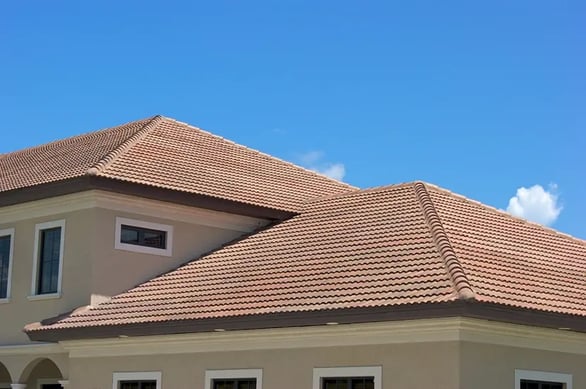
Clay and concrete shingles are iconic roofing materials associated with Mediterranean Europe, Latin America, and the Southwestern US. In the US, they are commonly seen in California, Arizona, New Mexico, Florida, and parts of Texas. Beyond their visual appeal, clay and concrete shingles are very durable, offering long-term protection and a classic look that can last for decades.
Clay and concrete shingles are often chosen for their ability to withstand harsh weather conditions, including extreme heat, high winds, and even heavy rainfall. They are especially well-suited for homes in regions prone to wildfires, as both materials are naturally fire-resistant. While clay shingles are the traditional choice, concrete shingles have become an attractive and affordable alternative. Both options provide durability, longevity, and a distinctive style, though there are some important differences between the two.
Clay Shingles
Clay shingles, often referred to as terracotta tiles, are made from natural clay that is shaped and then baked at high temperatures. The result is a hard, durable tile with a rich, reddish-brown color, though clay shingles can also come in other earth tones. The classic barrel or "S" shape of clay shingles gives roofs their distinctive Mediterranean or Spanish-style appearance, though flat and interlocking designs are also available for a more modern look.
One of the key benefits of clay shingles is their ability to maintain their color over time. Unlike other materials that may fade with sun exposure, clay tiles retain their natural hue for decades. Clay shingles are also highly resistant to fire, moisture, and insects, making them a long-lasting, low-maintenance option. However, they can be fragile, especially if walked on, so care must be taken during roof inspections or repairs.
Concrete Shingles
Concrete shingles are a more affordable and versatile alternative to clay. Made from a mixture of cement, sand, and water, concrete shingles can be molded into a variety of shapes and textures, including those that mimic the appearance of clay, wood, or even slate.
While they don’t have the natural color retention of clay tiles, concrete shingles can be dyed or painted in a range of colors. Over time, they may require occasional touch-ups to maintain their appearance. However, like clay shingles, concrete shingles are incredibly durable and fire-resistant, making them a practical choice for homeowners looking for a roof that can handle tough conditions. Concrete shingles are also slightly heavier than clay, so it’s important to ensure that your home’s structure can support the added weight.
Pros of Clay and Concrete Shingles
- Fire-Resistant: Both clay and concrete shingles are naturally fire-resistant, making them ideal for homes in areas prone to wildfires or where fire safety is a priority. This feature may lower insurance costs in some cases.
- Long-Lasting: Clay and concrete shingles are known for their impressive longevity. When properly installed and maintained, they can last 50 to 100 years or more.
- Aesthetic Appeal: The unique appearance of clay and concrete shingles adds a timeless charm to any home. Their classic look, often associated with Mediterranean, Spanish, and Southwestern architecture, enhances curb appeal and can even increase a home's resale value. The availability of different shapes, textures, and colors also allows for more design flexibility, particularly with concrete shingles.
Cons of Clay and Concrete Shingles
- Heavy: Both clay and concrete shingles are significantly heavier than asphalt or metal roofing materials. Clay shingles weigh in at about 600 pounds per square (100 square feet), while concrete shingles can weigh even more, sometimes exceeding 1,000 pounds per square. This added weight means that your roof structure must be able to support the load, which may require additional reinforcements before installation, adding to the overall cost.
- Expensive to Install: Although concrete shingles are more affordable than clay, both options are still considered premium roofing materials. The cost of the materials themselves, combined with the need for specialized installation, can make clay and concrete shingles more expensive than other roofing options. Additionally, the heavy weight of these shingles requires more time and labor during installation.
- Fragility (for Clay): While clay shingles are durable and long-lasting, they can be fragile if mishandled. Walking on a clay-tiled roof can easily cause tiles to crack or break, which can complicate roof repairs or inspections. Homeowners with clay shingles need to be cautious about roof access and may need to hire professionals who are experienced in working with delicate tile roofing.
5. Composite Shingles
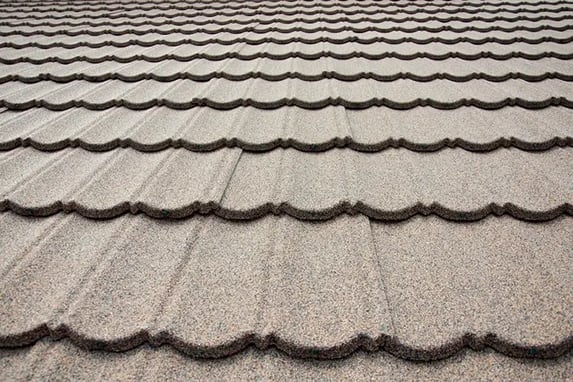
Composite shingles, also known as synthetic or engineered shingles, are made from a blend of materials such as plastic, rubber, and asphalt. These shingles are designed to mimic the appearance of more expensive roofing materials like slate or wood...but at a much lower price.
Pros of Composite Shingles
- Lightweight: Composite shingles are much lighter than natural materials like slate or clay. This means they can be installed on most roof structures without the need for extra support or reinforcement, which can reduce installation costs.
- Affordable: While they are about 3-4 times the price of a traditional asphalt shingle, composite shingles are still more budget-friendly than premium materials like wood shakes or slate.
- Designed to Mimic High-End Materials: Composite shingles are made to look just like natural materials like slate, wood, and tile at a fraction of the cost. Manufacturers use advanced molding techniques to create shingles with realistic textures, colors, and shapes so that, from the ground, it’s very difficult (if not impossible) to tell the difference.
- Low Maintenance: Unlike wood shingles, which can rot, crack, or attract pests; or slate, which can be brittle and difficult to repair, composite shingles are designed to be low-maintenance. They resist mold, algae, and UV damage, so you won’t need to worry about frequent upkeep or repairs.
- Environmentally Friendly Options: Some composite shingles are made from recycled materials. By repurposing materials like rubber or plastic, these shingles help reduce waste and lessen the environmental impact of your home’s roofing system.
Cons of Composite Shingles
- Lifespan May Not Match Natural Materials: While composite shingles are designed to replicate the appearance of high-end materials, they don’t always last as long. Natural slate, for example, can last over 100 years, while composite shingles typically have a lifespan of around 30 to 50 years. Although this is still longer than standard asphalt shingles, it’s something to consider if you’re looking for the longest-lasting roofing option available.
- Quality Can Vary by Manufacturer: Not all composite shingles are created equal, and the quality of the materials and manufacturing process can vary significantly between brands. Some composite shingles may offer superior durability, UV resistance, and weather performance, while others may be more prone to cracking, fading, or warping over time. It’s crucial to research different manufacturers, read product reviews, and work with a contractor who is familiar with the best brands.
- Not as Prestigious as Natural Materials: While composite shingles can closely mimic the look of natural materials, they don’t carry the same prestige or authentic feel as the real thing. If you want the highest level of luxury or historical authenticity, composite shingles are not going to satisfy your aesthetic goals.
6. Solar Shingles
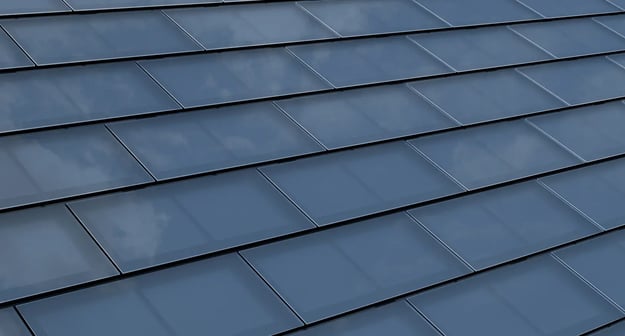
Solar shingles, also known as photovoltaic (PV) shingles, are exactly what they sound like: solar panels that double as shingles. Unlike traditional solar panels that are mounted on top of your roof, solar shingles are the roof itself.
Solar shingles are made from materials like tempered glass or polymer composites and contain the traditional photovoltaic cells that convert sunlight into electricity. They not only provide clean, renewable energy but are also very durable, like traditional shingles.
Pros of Solar Shingles
- Energy-Efficient: Solar shingles provide all of the cost-saving benefits of traditional solar panels, and can significantly reduce your reliance on the grid and lower your monthly electricity bills.
- Eco-Friendly: Solar shingles are also just as eco-friendly as traditional solar panels, reducing greenhouse gas emissions and reliance on fossil fuels.
- Aesthetic Appeal: Unlike traditional solar panels, which are bulky and visually intrusive, solar shingles look similar to standard asphalt shingles, providing a sleek, modern appearance.
- Durability: Solar shingles are built to withstand the elements, just like any other high-quality roofing material.
Cons of Solar Shingles
- High Upfront Cost: One of the biggest downsides of solar shingles is their high upfront cost. They are significantly more expensive than traditional asphalt shingles, and even more costly than installing standard solar panels. The initial investment can be a barrier, although the long-term savings on energy bills can offset these costs over time.
- Requires Specific Installation Expertise: Not all roofing contractors are experienced in working with solar technology, and finding a qualified installer can be challenging. The need for special expertise also makes solar shingle installations more expensive.
- Energy Production Depends on Location: The amount of electricity generated by solar shingles depends heavily on your geographic location and the amount of sunlight your roof receives.
7. Rubber Shingles
Rubber shingles are a unique and eco-friendly roofing option made from recycled materials, often including old tires and other rubber products. Designed to mimic the look of more traditional roofing materials such as slate or wood, rubber shingles offer homeowners an environmentally sustainable choice without sacrificing the aesthetic appeal of a high-end roof.
Rubber shingles are often treated with UV inhibitors, which help them resist fading from sun exposure over time. They also come with added benefits such as being waterproof, resistant to mold, mildew, and fire, and offering excellent insulation.
Pros of Rubber Shingles
- Eco-Friendly: Made from recycled materials like tires, rubber shingles help reduce waste in landfills and lower the demand for new raw materials.
- Durable and Long-Lasting: Rubber shingles are incredibly durable and can last 30 to 50 years or more with proper maintenance. Their flexibility allows them to withstand various environmental stresses, including freeze-thaw cycles, without cracking or splitting.
- Impact-Resistant: Rubber shingles’ natural elasticity helps them absorb and disperse the force of impacts, reducing the risk of damage compared to more brittle materials like slate or clay. This resistance to damage can also help lower insurance premiums in some regions.
- Waterproof and Fire-Resistant: Rubber shingles are naturally waterproof and are also treated to be fire-resistant.
- Low Maintenance: Compared to traditional shingles like wood, rubber shingles require very little maintenance. They are resistant to issues such as rot, insect infestation, and warping, which can be common problems with wood or asphalt roofs.
Cons of Rubber Shingles
- Limited Color and Style Options: While rubber shingles can be designed to mimic the appearance of slate or wood, they do come with fewer color and style options compared to asphalt or metal shingles. Most rubber shingles are available in earth tones or neutral colors, which may limit your ability to achieve a specific design or aesthetic for your home. If you're looking for a wide range of colors or more custom design elements, rubber shingles may not offer the variety you need.
- Higher Initial Cost: Rubber shingles tend to be more expensive than traditional asphalt shingles. While they are more affordable than premium materials like slate or clay, their cost can be a barrier for homeowners who are budget-conscious.
- Specialized Installation: Like some other alternative roofing materials, rubber shingles require specialized installation techniques to ensure proper performance. Not all roofing contractors are familiar with working with rubber shingles, so it’s important to find a professional who has experience with this material.
8. Wood Shingles
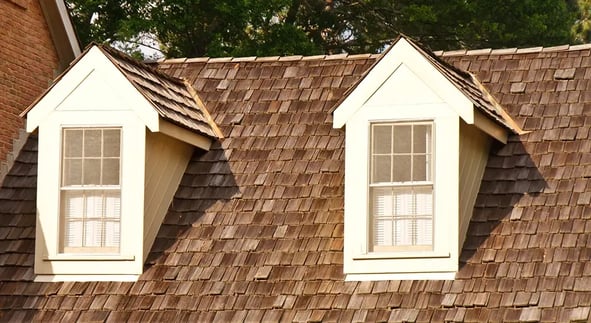
Wood shingles are an older roofing option often chosen for homes with traditional or cottage-style architecture, although it can complement a wide range of home designs. Wood shingles’ warm, organic appearance sets them apart from more modern materials like asphalt or metal.
Wood shingles are typically made from naturally durable woods like cedar or redwood, which provide a rich, textured look along with strong weather resistance. These shingles are thin, flat pieces of wood that are installed in overlapping rows, creating a roof that not only looks stunning but also provides effective insulation and ventilation. Over time, wood shingles develop a distinctive patina, adding character and further enhancing their rustic appeal.
While wood shingles offer plenty of aesthetic and practical benefits, they do come with some trade-offs, including the need for regular maintenance and a higher initial cost compared to materials like asphalt. Additionally, some areas may restrict the use of wood shingles due to fire safety concerns, particularly in regions prone to wildfires.
Types of Wood Used
When it comes to wood shingles, two of the most popular wood species used are cedar and redwood.
Cedar
Cedar is the most common wood used for shingles due to its natural resistance to moisture, insects, and decay. Cedar contains natural oils that help protect it from rot and pests. Cedar shingles come in two varieties: white cedar and red cedar. White cedar tends to age to a soft, silvery-gray color, while red cedar weathers to a more reddish-brown hue.
Cedar is also relatively lightweight, making it easier to install than heavier materials like slate or clay.
Redwood
Redwood has a rich, reddish color and a unique grain pattern, giving your home a distinctive and luxurious appearance. Like cedar, redwood contains natural oils that protect it from moisture, decay, and insect damage.
Redwood is slightly more durable than cedar, which is why it’s often chosen for high-end projects or homes in regions that experience more extreme weather conditions. But it’s also more expensive, making cedar the more common choice.
Pros of Wood Shingles
- Natural Beauty: One of the most compelling reasons to choose wood shingles is their unmatched aesthetic appeal. The natural grain, color, and texture of wood create a warm, inviting look that’s hard to replicate with synthetic materials. As wood shingles age, they develop a weathered patina that adds character and enhances their rustic charm, making them a perfect fit for homes with traditional, country, or cottage-style architecture.
- Eco-Friendly: Wood shingles are an environmentally friendly option, as they are made from a renewable resource. Many wood shingles are sourced from sustainably managed forests, and they can be recycled or composted at the end of their lifespan. Additionally, because wood is a natural insulator, it can help improve your home’s energy efficiency by regulating temperature and reducing heating and cooling costs.
- Natural Insulation: Wood shingles provide excellent natural insulation, helping to keep your home cooler in the summer and warmer in the winter. This insulation helps reduce energy consumption and can lead to savings on your utility bills. The wood’s ability to “breathe” also promotes ventilation, which can help prevent moisture buildup in your attic and roof structure.
Cons of Wood Shingles
- Requires Regular Maintenance: One of the biggest drawbacks of wood shingles is the need for regular maintenance. Wood is susceptible to moisture, which can lead to rot, mold, and mildew if not properly maintained. To keep wood shingles in good condition, they need to be treated with protective coatings or sealants every few years. You’ll also need to clean them periodically to remove debris, moss, or algae growth, which can shorten the lifespan of the shingles if left unchecked.
- More Expensive: Wood shingles tend to be more expensive than other roofing materials like asphalt or composite shingles. Both the cost of the raw materials and the labor involved in installing wood shingles are higher, making them a premium roofing option. Additionally, the long-term maintenance costs can add up over time, making wood shingles a more significant investment compared to lower-maintenance materials.
- Not Allowed in Fire-Prone Areas: Another major consideration is that wood shingles may not be permitted in areas prone to wildfires. Some regions have building codes that restrict or prohibit the use of wood shingles due to their higher fire risk compared to non-combustible materials like metal or asphalt. While some wood shingles can be treated with fire retardants, these treatments may not be enough to meet local fire safety standards.
The Upshot
Choosing the right roofing shingles for your home is a crucial decision that impacts not only the look of your house but also its durability, energy efficiency, and long-term maintenance. Whether you're drawn to the affordability of asphalt, the elegance of slate, or the eco-friendliness of solar and rubber shingles, each option has its pros and cons.
Now that you've learned about the different types of shingles, check out our in-depth comparison of the two most popular types of roofing in the US: asphalt and metal.

